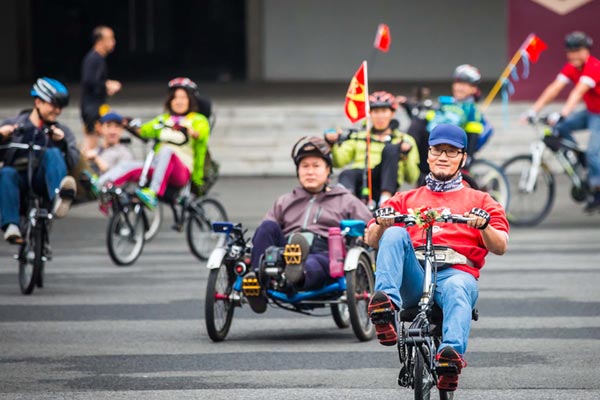After 20 years, China hits education spending goal
BEIJING -- Premier Wen Jiabao announced on Tuesday that the country's public expenditures on education reached 4 percent of its GDP in 2012, a target set almost 20 years ago.
"Government spending on education totaled 7.79 trillion yuan over the past five years, increasing at an average annual rate of 21.58 percent to reach 4 percent of the GDP in 2012," Wen said in his annual work report delivered to deputies to the top legislature. (7.79 trillion yuan is equal to $1.25 trillion)
Wen's remarks won warm applause from the audience in the Great Hall of the People, but did little to convince education experts and the public about the progress the country is making in the sector.
A delayed goal
Dr. Xiong Bingqi, an outspoken scholar on education, commented on his blog that it was an historical accomplishment, but a relatively low-level goal achieved 12 years after its original deadline.
In 1993, China issued a guideline on educational reform and development, in which it pledged to raise the government's input on education to 4 percent of the GDP by the end of 2000.
According to UNESCO's World Education Report 2000, the world average education expenditure was 4.7 percent of a country's GDP and the average for developed countries in Asia and Oceania stood at 4.0 in 1990, when China recorded just 2.3 percent.
Sun Lijian, a finance professor with the Shanghai-based Fudan University, said attaining the 4-percent threshold has profound meaning, as China's work to shift its economic growth pattern has to be based on enhancing education.
Problems remain
Wen stressed in his report that in the past five years, the government has given high priority to developing education by investing heavily.
"Notable progress" has been made in improving fairness in education by allocating more educational resources to rural, remote, poor and ethnic minority areas, said Wen.
However, the education gap between regions, enrollment restrictions on migrant students and safety issues with school buses and school buildings have all added to the public's concerns about the apparently problem-plagued education sector.
The premier's report also acknowledged that social problems have markedly increased, and many problems in various areas of the education sector affect people's vital interests.
Last August, Chinese netizens were astonished to learn that pupils in a central China village had to carry their own desks to a school that was unable to afford basic furniture for classrooms.
Xiong Mei, headmaster of a primary school in northeast China, noted this as just one example of the predicaments rural schools find themselves in due to inadequate government funding.
On his blog, Dr. Xiong also noted that limited educational funds were sometimes put toward purchasing luxurious decorations or adding to the illicit gains of corrupt officials.
Distribution & supervision
As Wen pledged to further increase government expenditures on education and make good use of such funding, experts called for financial reform and enhanced supervision over the use of such funding.
Liu Yichun, president of Northeast Normal University in Jilin province, said the government should explore more efficient methods for allocating and using educational funds and building long-term safeguarding measures to secure the future growth of such funds.
The government's primary duty in educational service is to provide fair and equal access to basic education, or the nine-year compulsory schooling, according to Dr. Xiong, the education scholar.
However, there are still significant differences between ordinary schools and "key" schools in terms of their shares of governmental funds -- not to mention the urban-rural gap, he wrote.
He further explained that the central government has invested heavily in higher education, but some county-level local governments were unable to allocate adequate funds for rural primary schools or middle schools.
Reform in the distribution system should focus on giving provincial governments more resources and responsibilities in rural school financing, Dr. Xiong suggested.
Education appropriation committees at both the national and local levels should also be set up to supervise the government's input and the use of the funds, he added.























